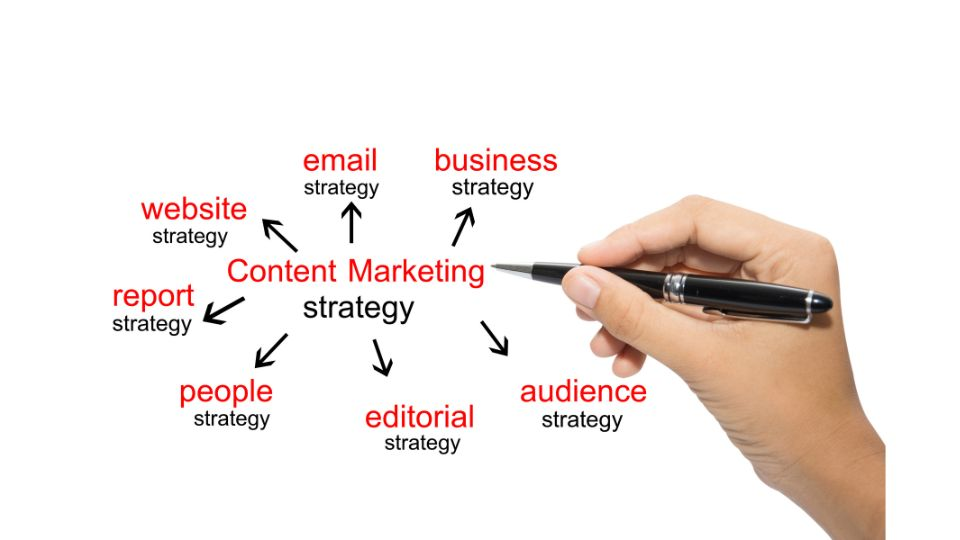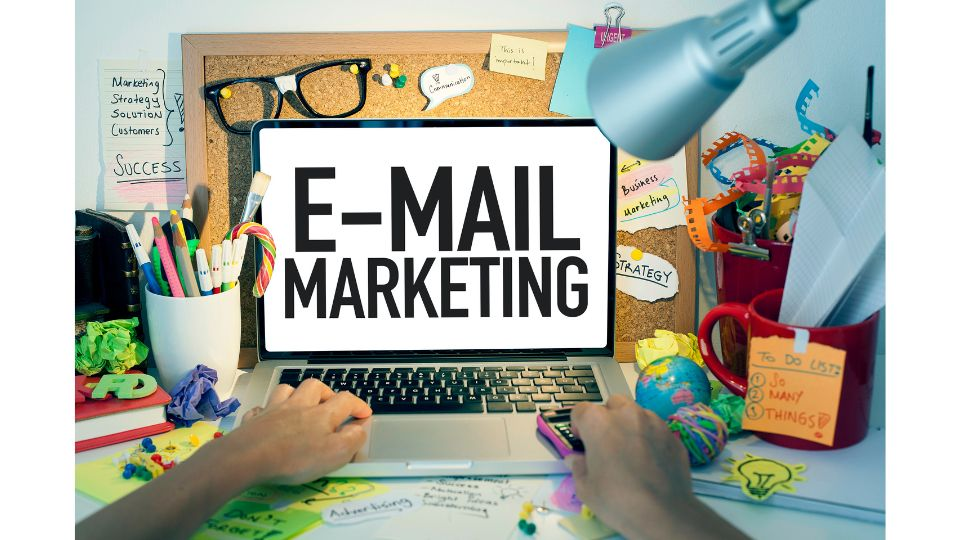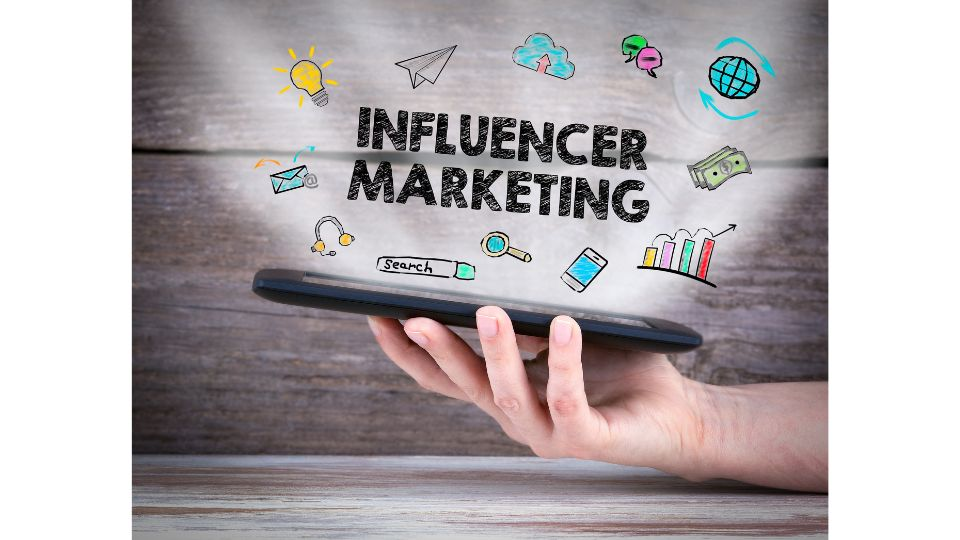Ecommerce Store Marketing Strategy: 15 Tips for Success
15 Success secrets to direct you on the path to eCommerce profits in no time!
With millions of people shopping online, ecommerce stores offer a vast opportunity for businesses to grow their customer base and increase sales.
However, with so many ecommerce stores out there, it can be challenging for a new online store, to stand out and attract new customers. That’s why it’s essential to have a solid ecommerce store marketing strategy in place.
Here, we’ll explore some effective and best ecommerce sales and marketing strategies to help you succeed in selling online anything. So, whether you’re a seasoned eCommerce store owner or just starting, this blog will provide you with valuable insights and actionable tips to take your marketing strategy to the next level. Let’s get started!
1. Produce Original And Creative Content

Produce Original Content is an essential part of any effective ecommerce store or another ecommerce website, marketing plan, and content strategy. Original content refers to any content that is unique and exclusive to a particular ecommerce website, which cannot be found on any other ecommerce website.
The importance of producing original content in your own ecommerce marketing strategy, sales, and store marketing efforts can be highlighted through the following points:
Build brand authority and reputation
Creating original content that is informative and useful to the online store and target audience can help establish the ecommerce store as an authority in its industry. When consumers recognize a brand as an authority in a specific niche, they are more likely to trust and purchase products from that online store.
Boost social media engagement
Original content can be used to generate buzz on social media platforms. When people find user-generated content engaging and informative, they are more likely to share it with their followers, resulting in increased social media engagement.
Enhance customer experience
Original content can also be used to educate customers on products or services, providing them with valuable information that can enhance their overall shopping experience. When customers have access to useful information, they are more likely to make informed decisions and return for repeat purchases.
2. Invest In Search Engine Optimization

Search engine optimization (SEO) is a powerful marketing strategy for ecommerce stores to improve their online visibility and drive more traffic to the product pages on their website.
To improve the position of product pages in search engine results pages (SERPs) for pertinent keywords, SEO entails improving the content, structure, and other components of a website.
Here are some reasons why ecommerce businesses and stores should invest in SEO:
-
Improve Online Visibility
When your ecommerce store ranks higher in search results, more people are likely to find your website.
This can lead to an increase in organic traffic, which can ultimately result in more sales and revenue.
-
Increase Trust And Credibility
When your ecommerce store appears at the top of search results, it can increase your brand’s trust and credibility among potential customers.
People are more likely to trust a website that appears at the top of search results than one that appears on page 3 or 4.
-
Cost-effective
SEO can be a cost-effective marketing strategy compared to other forms of online advertising, such as pay-per-click (PPC) advertising.
Once your ecommerce store has a high-ranking position in the search engine results, you can continue to receive organic traffic without having to pay for each click.
-
Long-term Results
Unlike other forms of online advertising that stop working as soon as you stop paying, SEO can provide long-term results.
If you invest in SEO today, your ecommerce store can continue to rank higher in the search engines’ results for months or even years to come.
3. Ecommerce Marketing Strategy

Ecommerce marketing strategies are essential for online businesses to promote their products and services, attract new and existing customers, promote sales, and drive online sales further.
Here are some of the key reasons why ecommerce marketing strategies are important:
-
Increase Sales
Ecommerce marketing strategies help businesses increase sales by driving traffic to their website and converting that traffic into paying customers.
Effective ecommerce marketing campaigns can boost revenue, generate sales, expand the customer base, and lead to repeat business.
-
Build Brand Awareness
Ecommerce marketing strategies help businesses build brand awareness by creating a consistent message across multiple channels.
This creates a strong brand identity that prospective customers can easily recognize and identify with.
-
Improve Customer Retention
Ecommerce marketing strategies help businesses improve customer retention by creating loyalty programs, a loyalty program offering discounts, and providing exceptional customer service.
These tactics help retain customers and increase the lifetime value of each customer.
-
Gain Insights Into Customer Behavior
Ecommerce marketing strategies allow businesses to gather data on customer behavior and preferences.
This data can be used to improve marketing campaigns, personalize communication, and create targeted promotions.
4. Content Marketing Strategies

Content marketing is a digital marketing strategy that involves creating and distributing valuable, often rich and relevant content, relevant content, and consistent content to attract and retain a target audience.
Here are some effective content marketing campaign strategies:
Develop a Content Marketing Plan
A content marketing plan outlines the goals, target audience, content topics, channels, and metrics for success. A well-planned strategy helps to ensure consistency, focus, and measurable results.
Define Your Target Audience
Understanding your target audience is critical for creating relevant and engaging content. You can create buyer personas that represent your ideal customers and use them to guide your content creation.
Use Various Types of Content
Different types of content can appeal to different audiences and help you reach your marketing goals. You can create blog posts, videos, podcasts, infographics, social media posts, webinars, white papers, and more.
Distribute Content Effectively
Distributing your content through various channels such as email, various social media platforms, and content syndication networks can help increase reach and engagement. Tailor your distribution strategy to the preferences and habits of your target audience.
5. Run PPC Campaigns

Paid search engine optimization ads, also known as pay-per-click (PPC) advertising, are a form of online advertising where advertisers pay a fee each time a user clicks on their ad. These search engine optimization ads appear on search engine results pages (SERPs) and other websites, and can help drive immediate traffic to your ecommerce website or store.
Here are some tips for setting up effective paid and search engine marketing email campaigns:
Define Your Campaign Objectives
Define the goals for your PPC campaign, such as increasing sales, generating leads, or driving traffic. This will help you create relevant ad copy and landing pages that align with your objectives.
Conduct Keyword Research
Conduct keyword research to identify the keywords and phrases your target audience is using to search for your products or services. Use tools like Google Keyword Planner or SEMrush to find high-volume, relevant keywords.
Create Compelling Ad Copy
Write ad copy that is clear, concise, and compelling. Use relevant keywords in your headlines and ad descriptions to improve ad relevance and click-through rates (CTR).
Optimize Your Landing Pages
Create landing pages that align with your ad copy and offer a clear call-to-action (CTA). Make sure your landing pages are mobile-friendly and optimized for fast loading speeds.
6. Instagram

Instagram is a visual-centric social media platform with over one billion monthly active users. As such, it presents an excellent opportunity for ecommerce retailers and stores to showcase their products, increase brand awareness, and have existing customers reach a wider audience.
Here are some effective strategies to leverage Instagram for your next best ecommerce marketing strategies for online shoppers in-store:
Set Up an Instagram Business Account
Create an Instagram business account and optimize it for your ecommerce store. Make sure to include your website link, business information, and branded profile picture and cover photo.
Use Instagram Shopping
Instagram Shopping allows you to tag products in your posts and stories, making it easy for users to purchase products directly from your ecommerce store. Make sure to follow the platform’s guidelines and requirements for setting up Instagram Shopping.
Create High-Quality Visuals
Instagram is a visual platform, so creating high-quality visuals is key to standing out and engaging your audience. Use professional product photography, or user-generated content, to showcase your products in a visually appealing way.
Post Consistently
Consistency is crucial when it comes to building an engaged following on Instagram. Post regularly and at optimal times when your target audience is most active on the platform.
Engage with Your Audience
Engage with your audience by responding to comments and direct messages, and by liking and commenting on their posts. This helps to build relationships and trust with your audience.
7. Email marketing

Email marketing is one of the most effective ways to communicate with your customers and build long-term relationships with them. As an ecommerce store owner or ecommerce marketing strategy, email and the most popular marketing strategies can help you increase customer engagement, drive sales, and retain customers.
Here are some ways in which email marketing and digital marketing can help you achieve these goals:
Personalized Newsletters
Sending regular newsletters to your customers is a great way to keep them informed about your latest products, promotions, and news. By personalizing these newsletters with the customer’s name, you can create a stronger connection with them and make them feel valued.
Promotional Offers
Sending promotional offers and discounts via email is a great way to encourage customers to make a purchase. By targeting these offers to specific customers based on their purchase history or browsing behavior, you can increase the chances of conversion and drive sales.
Abandoned Cart Reminders
Cart abandonment is a common problem for ecommerce stores, but email marketing can help you recover some of these lost sales. By sending abandoned cart reminders, you can remind customers about the items they left behind and encourage them to complete their purchases.
8. Text Message Campaigns

SMS marketing techniques can be an extremely powerful tool for ecommerce businesses and stores looking to reach customers directly and drive sales.
Here are some ways in which SMS and marketing channels can help you achieve these goals:
Targeted Messages
With SMS marketing, you can send targeted messages to specific groups of customers based on their preferences or behavior. For example, you can send a message to customers who have made a purchase in the past month, or to customers who have abandoned their cart.
Exclusive Offers
SMS marketing is a great way to send exclusive offers and discounts to your customers. By offering a special deal that’s only available to SMS subscribers, you can create a sense of urgency and motivate customers to make a purchase. This can be particularly effective for time-sensitive promotions or seasonal sales.
Product Updates
SMS marketing can also be used to keep customers informed about new products or updates to your online store. By sending a message with a link to your latest product release or a blog post about your industry, you can keep customers engaged with your brand and position yourself as an authority in your field.
Repeat Purchases
SMS marketing can help you encourage repeat purchases from your customers by reminding them about products they have previously purchased or by offering personalized recommendations based on their purchase history.
9. Boost your organic social presence

“Social” social media marketing” platforms like Facebook, Twitter, and Pinterest offer ecommerce stores a powerful way to promote their brand and engage with customers.
Here are some ways in which social media marketing can help you achieve these goals:
Engaging Posts
By creating engaging posts that are relevant to your audience, you can build a following and increase brand awareness. This can include product announcements, industry news, or tips and advice related to your niche.
Contests
Running contests on social media can be a great way to generate buzz around your brand and incentivize engagement from your followers. For example, you could run a photo contest where customers share pictures of themselves using your products or a quiz contest where customers answer questions related to your brand or niche.
Engage with Your Followers
Social media is a two-way conversation, so it’s important to engage with your followers and respond to their comments and messages. By showing that you are listening and responsive, you can build a sense of community around your brand and foster customer loyalty.
Paid Advertising
In addition to organic posts and engagement, social media platforms also offer paid advertising options that can help you reach a wider audience and drive sales. This can include options like promoted posts or paid social media ads that target specific demographics or interests.
10. Google Ads

Google Shopping Ads can be an extremely effective way for ecommerce stores to increase online sales and reach potential customers who are actively searching for products similar to yours.
Here are some ways in which Google Ads can help you achieve these goals:
Targeted Keywords
By using search engines and selecting targeted keywords related to your products or niche, you can ensure that your ads are shown to potential customers who are actively searching for products similar to yours. You can use marketing tactics like keyword research tools to find popular and relevant keywords to include in your campaigns.
Ad Copy
Your ad copy should be clear, concise, and compelling. It should highlight the benefits of your products and include a clear call to action to encourage clicks and conversions. You can use ad testing tools to experiment with different ad copy variations to see which ones perform best.
Landing Pages
Your landing pages should be designed to convert visitors into customers. They should be optimized for the keywords and ad copy used in your campaigns and your category pages should have a clear and easy-to-use interface.
Conversion Tracking
It’s important to set up conversion tracking in your Google Ads account so you can track which campaigns and keywords are driving the most sales. This will allow you to optimize your campaigns for maximum ROI and ensure that your advertising budget is being spent effectively.
11. UX marketing strategies

UX marketing strategies for ecommerce success are focused on creating a positive user experience that will encourage customers to your online store quickly engage with your brand, make purchases, and become loyal advocates.
Here are some UX marketing strategies that ecommerce stores can use to achieve these goals:
Website Design
A well-designed website with clear navigation, an easy-to-use interface, and an intuitive layout can help customers find what they are looking for quickly and easily. This can improve their overall user experience and increase the likelihood that they will make a purchase.
Personalization
By using customer data and browsing history, you can personalize the user experience by recommending products that are relevant to their interests and preferences. This can create a more engaging and personalized experience for the customer, which can increase the likelihood that they will make a purchase.
Simplify Checkout Process
A complicated checkout process can be a major barrier to making a purchase. By simplifying the checkout process and removing any unnecessary steps or distractions, you can make it easier for customers to complete their purchases and increase the likelihood that they will do so.
12. Optimize for mobile

Optimizing for mobile is an essential aspect of modern digital ecommerce marketing strategy, as more and more people are using their mobile devices to access the internet and make purchases from online retailers.
Here are some key considerations for optimizing your own ecommerce site or store for mobile:
Responsive Design
A responsive website design automatically adjusts to the screen size of the device being used to view it. This ensures that the first website visitors see is easy to navigate and read on any device, from desktops to tablets and smartphones.
Page Speed
Mobile users expect fast-loading websites, and slow load times can cause frustration and drive potential customers away. To optimize your website’s speed, consider compressing images and videos, reducing the size of web pages, and using a content delivery network (CDN) to improve load times.
13. Reward loyal customers

Rewarding loyal customers is a key strategy for ecommerce stores looking to build long-term relationships with their customers and increase customer retention.
Here are some ways that ecommerce stores can reward their loyal customers:
Loyalty Programs
Loyalty programs are a popular way to attract customers and reward loyal customers. These programs typically offer points or rewards for purchases, referrals, or other actions that encourage customer engagement. Customers with customer loyalty programs can then redeem these points for discounts, free products, or other rewards.
Exclusive Discounts and Offers
Offering exclusive discounts and offers to loyal customers can be a great way to show your appreciation for their business. These discounts can be offered via email, social media, or through a loyalty program.
Early Access to Products and Sales
Offering loyal customers early access to new products or sales can be a great way to show your appreciation for their business and create a sense of exclusivity.
14. Influencer marketing

Influencer marketing is a strategy in ecommerce marketing that involves partnering with influential people in your industry to promote your products or services. By leveraging the influence and reach of word-of-mouth marketing to these individuals, ecommerce stores can increase brand awareness, reach new audiences, and drive sales.
Here are some key considerations for using influencer and popular marketing strategies in your ecommerce marketing plan:
Identify Relevant Influencers
The first step in influencer marketing is to identify relevant influencers who have a strong following in your industry or niche. Look for individuals who are trusted and respected by their followers and who have a style and tone that aligns with your brand.
Set Clear Goals and Objectives
Before launching an influencer marketing campaign, it’s important to set clear goals and objectives. Determine what you want to achieve, whether it’s increased brand awareness, more website traffic, or higher sales, and set specific metrics to track your progress.
Define Your Budget
Influencer marketing can range from free product exchanges to paid partnerships, and it’s important to define your own marketing budget well upfront. Consider how much you’re willing to spend and what kind of return on investment you’re expecting.
Monitor and Measure Results
As with any marketing strategy, it’s important to monitor and measure the results of your influencer marketing campaigns. Use analytics tools to track website traffic, sales, and engagement, and make adjustments as needed to optimize your results.
15. Collaborations

Collaborations are a powerful way for ecommerce stores to expand their reach, increase brand awareness, and drive sales. By partnering with other brands, businesses, or influencers, ecommerce stores can tap into new audiences, access new channels, and create engaging content that resonates with their target customers.
Here are some key considerations for successful collaborations in your ecommerce business:
Identify Relevant Partners
The first step in successful collaboration is to identify partners that are relevant to your brand and audience. Look for brands or businesses that share similar values or customer demographics, or influencers with a strong following in your niche.
Define Your Objectives
Before entering into a collaboration, it’s important to define your objectives and what you hope to achieve. This may include increased brand awareness, new customer acquisition, or higher sales. Be sure to set clear metrics to track your progress and measure your success.
Develop a Partnership Strategy
Once you’ve identified relevant partners and defined your objectives, it’s important to develop a partnership strategy that outlines the terms of the collaboration. This may include the type of content that will be created, the timing of the collaboration, and the compensation or rewards that will be offered.
Key Takeaway: Ecommerce Marketing Strategies
A successful ecommerce marketing strategy requires a comprehensive approach that includes a mix of online and offline tactics. The 15 tips outlined in this blog can help you develop an effective marketing plan that can drive traffic, generate leads, and increase sales.
It’s important to understand your target audience, create engaging content, utilize social media, optimize your website for search engines, and measure your results to continually improve your strategy. By implementing these tips, you can establish a strong online presence and grow your ecommerce business.

